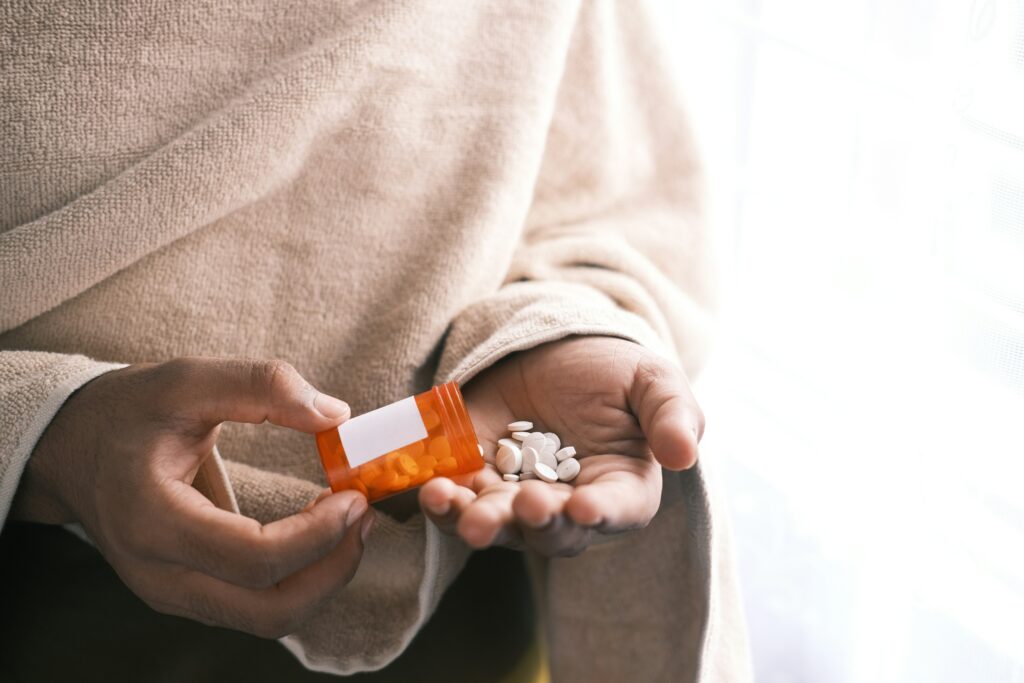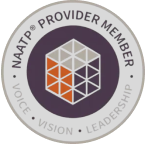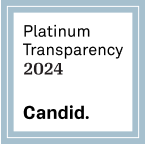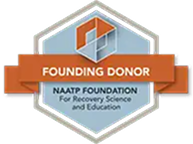The Sinclair Method For Alcoholism: Does It Actually Work?

If it sounds too good to be true, it might be. These key criticisms of The Sinclair Method for alcohol use disorder are crucial to consider.
If you or someone you know has struggled with alcohol abuse, chances are, you know firsthand just how emotionally fraught the rollercoaster of addiction can be.
For some of us, we struggle “out loud” — alcohol can bring out a side of us that we wish others never had to see. For others, we may seem functional on the surface, but internally, we’re being pulled into the whirlpool of despair and dread, with our only relief being the very thing that keeps us trapped.
The idea that our recovery could come in the form of a medication is an awfully enticing one.
When many of us imagine getting sober, we picture the church basements with cheap coffee, or our heads hanging as we pack a bag for rehab, or the dramatic interventions that we’ve seen staged on television, with ultimatums from loved ones that leave us blistering hot with shame, frustration, and regret.
Could we skip all of that for something as discreet and unassuming as a pill? And if it works… why aren’t more people talking about it?
In this article, we’ll be discussing the medication Naltrexone, which is prescribed for reducing or stopping alcohol consumption, as well as the Sinclair Method (sometimes referred to as TSM), which is an approach to taking Naltrexone only when you anticipate drinking (as opposed to daily usage or long-acting injections).
What is Naltrexone and How Does It Work For Alcohol?
In short, Naltrexone is a generic prescribed medication that can be used to treat alcohol use and opioid use disorders.
Research has shown that Naltrexone can reduce cravings for alcohol specifically and diminishes the pleasurable effects of drinking by blocking certain opioid receptors in the brain.
It does this by binding to opioid receptors without activating them, so when endorphins released by drinking have nothing to bind to, it diminishes the euphoric and sedative effects that make intoxication, well, very intoxicating!
Naltrexone also impacts the release of dopamine, which is the hormone associated with pleasure and reward. Naltrexone disrupts this uptick in dopamine, which means the behavior is less likely to be reinforced as a “reward” overtime.
By disrupting this association between drinking and intense pleasure, and better managing the release of dopamine, the reward system of the brain becomes less incentivized to seek out alcohol in greater amounts and frequency.
This can lead to a reduction in drinking, if not complete abstinence.
Side Effects of Naltrexone
Common side effects for people taking Naltrexone for alcohol use include:
- Headache
- Fatigue
- Anxiety
- Digestive issues
- Increased thirst
- Sleep changes
- Mild muscle or joint pain
These side effects are usually temporary and can be managed with the help of a prescriber or doctor.
More serious side effects can include mental health changes, like worsening depression or suicidal ideation, as well as liver problems. This makes medical supervision while taking the medication especially important.
What is the Sinclair Method?
The Sinclair Method is rooted in what psychologists call “operant conditioning.” Basically, behaviors that are paired with a reward are more likely to occur again, whereas behaviors that occur with a punishment are less likely to occur again.
With TSM, Naltrexone is taken an hour before someone plans to drink alcohol.
By removing the rewarding effects of drinking, the association between alcohol and pleasure is worn down overtime. With the behavior becoming inherently less rewarding, its appeal — both psychologically but also biochemically — is dulled until the individual either drinks less or stops drinking altogether.
This particular method of using Naltrexone and then drinking afterward was developed by Dr. David Sinclair, who first noticed Naltrexone’s potential for reducing or extinguishing cravings for alcohol in his research with animals who had been trained to drink.
These animals would press a lever to receive alcohol, and Dr. Sinclair noticed that the longer they were deprived of alcohol, the more frequently and urgently they would push the lever.
Deprivation, he noted, appears to increase cravings and the likelihood of binge behavior. Through this research, he also noticed that Naltrexone could disrupt the escalating impact of deprivation, thereby reducing cravings and binge behavior.
He then went on to apply this rationale to humans, conducting clinical trials that introduced Naltrexone in a similar way: that those who wished to drink should take the medication an hour before doing so, but otherwise drink as they normally would.
The expectation was that a less rewarding effect from alcohol overtime would condition the brain to drink less frequently and in smaller amounts (so, reducing binge behavior).
While those clinical trials did demonstrate some effectiveness, there are important criticisms that are often missed when discussing The Sinclair Method, especially as it relates to alcohol use disorder.
This brief history can help contextualize why the Sinclair Method still remains contested amongst recovery professionals and clinicians today.
3 Key Criticisms of The Sinclair Method
1. It misunderstands the binge/restrict cycle (as it presents in humans).
When Dr. Sinclair noticed that animals who were deprived of alcohol for long periods of time would request it more frequently, what he was observing was akin to something called the binge-restrict cycle.
While it’s more common to hear about the binge-restrict cycle in the realm of eating disorders, it’s just as applicable to the behavioral patterns we observe with substance use as well.
If you’ve ever denied yourself a bag of potato chips that you were desperately craving, you’re already familiar with a lower stakes version of this cycle.
By denying your body something that it craves, you may find yourself more fixated on it. Overtime, you might lose the ability to tolerate the hunger cues and cravings that signal to you that you want to eat the potato chips.
This might result in eating the entire bag of chips or binging on a less appetizing substitute, and then feeling racked with shame afterwards.
From there, you might vow to stop purchasing potato chips, or otherwise restrict your access to them (or even go on another diet as a compensatory response!). But this usually reinforces the same sense of mental and physical deprivation that led you to eat that much in the first place, leading to a cyclical pattern.
In eating disorder recovery, the answer isn’t to make food itself less appetizing. Rather, it’s to work on the underlying shame, to unlearn restrictive mindsets that increase feelings of deprivation and punishment, and to nourish the body consistently enough that it no longer experiences a state of scarcity.
While addiction and eating disorders are not exactly the same, the phenomenon of mental restriction is important to consider in both contexts.
Dr. Sinclair observed a very contained version of the binge-restrict cycle in his earlier animal experiments.
He used Naltrexone to make the reward of alcohol less exciting when it was finally obtained. However, the animals were not aware of the introduction of Naltrexone — they simply became disinterested in something that used to be rewarding.
Human beings, however, are usually aware that they’re taking Naltrexone and that the “high” that they would expect from drinking will no longer happen when they drink.
By anticipating a lack of reward from an otherwise rewarding behavior, you can probably guess how a human being might respond to this situation — with a sense of deprivation before the drinking event even occurs.
Human beings, unlike animals in a lab, have agency and therefore The Sinclair Method is inherently more complex than very basic operant conditioning (“remove reward, reduce behavior”).
Due to an increasing sense of deprivation, some may stop taking the medication — therefore increasing the risk of binge drinking by intensifying the reward response that occurs after a period of deprivation — or they may seek out other maladaptive behaviors to cope, especially if that individual isn’t supported in addressing their underlying triggers for addiction.
In other words? Restriction, especially for human beings, isn’t just a physical experience of withdrawal or denial — it’s a mental experience as well.
Connected to this phenomenon of mental restriction are two other important criticisms of TSM, outlined below.
2. It views alcohol use disorder as an isolated behavior to be corrected.
As we unpacked earlier, human beings are not the same as animals who are trained to drink alcohol in a lab environment.
Our reasons for depending upon alcohol are complex, and simply reducing the amount we drink or abstaining from drinking altogether rarely is enough on its own for someone to experience meaningful relief and healing in the long-term.
This is because diminishing the rewards of one behavior doesn’t remove the environmental triggers and psychological distress that drive someone to cope through escapism and/or emotional numbing.
This is why, for example, researchers continue to explore the high co-occurring rates of substance use disorders and eating disorders. This is also why the trope of an “addictive personality” — while not exactly based in science — does have some compelling evidence to suggest that many of us who deal with addiction are vulnerable to developing other harmful coping mechanisms as well.
The truth is, decoupling the pleasurable effects of alcohol from drinking is like using a weed whacker on your garden. You may have the appearance of having cleaned things up, but unless you’ve pulled those weeds from the roots, they can easily reemerge and wreak havoc later on.
Reducing one’s consumption of alcohol is undoubtedly an important form of harm reduction, but if recovery is the actual goal, behavioral conditioning alone does not address the source of the “wound” — it’s just reducing or stopping the bleeding, for now.
3. It has little to no room for “user error” or imperfect use.
The Sinclair Method specifically depends upon someone knowing an hour in advance when they’ll drink, taking Naltrexone upon that realization, and doing so each and every time drinking might occur.
For those who “drink to get drunk,” it can feel like an absurd demand that they find the motivation to remove their reward willingly at the same moment they’ve decided they want to get drunk.
By asking someone to willingly remove the reward from drinking before it happens, some may inadvertently feel that the medication becomes a punishment or preemptive deprivation, which can interfere with taking it as consistently as is required for safe and effective use.
It stands to reason, then, that the Sinclair Method is an approach that would be extremely challenging for most people with an alcohol use disorder.
It’s best for someone who can anticipate and plan for when drinking will occur, is highly and consistently motivated to stop drinking, has ongoing accountability measures to ensure they adhere to the regimen, and has no medical or psychological factors that would make continued alcohol consumption unsafe.
In our experience, this describes a very small fraction of people struggling with an alcohol use disorder.
What Does Research Say About Naltrexone and The Sinclair Method (TSM)?
Here’s what we know: Naltrexone does appear to rely on the diminishing rewards from drinking while taking the medication overtime — so while Naltrexone could still be helpful in reducing cravings for those who are abstinent, the medicine is technically more impactful when it’s taken while someone is still consuming alcohol.
There’s also ongoing debate about whether or not Naltrexone is effective or even safe for more severe cases of alcohol use disorder (as opposed to supporting those who are binge drinkers or have mild to moderate alcohol use disorder).
In this sense, you might think of Naltrexone as either an intervention for binge drinkers to moderate their drinking before it escalates or becomes chronic, or as a form of harm reduction for those with less severe alcohol use disorders, especially if relapse is imminent or possible.
However, there isn’t enough evidence to suggest that The Sinclair Method in particular is the best way to prescribe Naltrexone, especially with respect to alcoholism.
Considering how much it relies on strict adherence and advanced planning, as well as the bulk of studies being focused on binge drinkers or those with less severe presentations of alcohol use disorder, the jury is still out on whether or not TSM is suitable for those who are struggling with alcoholism specifically.
Currently, the studies that have looked at The Sinclair Method’s efficacy only focused on the short term benefits, rather than following participants over an extended period of time (so, we can’t confidently say if those same benefits lasted beyond a year’s time).
We must also keep in mind, too, that these studies narrowly define “success” as a reduction in drinking — so, they measure behavioral correction — rather than taking a more holistic view of what lasting recovery entails.
With The Sinclair Method especially, we don’t know whether or not participants saw meaningful improvements in their quality of life that could be sustained long-term, especially without eventually relapsing and/or aggravating other co-occurring conditions.
So What’s the Best Use of Naltrexone For Alcohol Abuse?
At Fellowship Hall, we support the supervised use of Naltrexone where medically indicated.
Given The Sinclair Method’s unrealistic dependence on near-perfect compliance, as well as its narrow approach to recovery as behavioral correction and “one-size-fits-most,” we do not personally endorse its use.
We prefer to take a more holistic lens by utilizing Naltrexone (where appropriate) alongside psychosocial support, relapse prevention counseling, and treatment of co-occurring conditions and other risk factors.
In truth, there is no “magic pill” for addiction.
But there is community support, trained mental health providers, and safe and compassionate environments where healing isn’t just “correcting” a behavior, but it’s expanding what’s possible for our lives — including more connection, joy, and purpose outside the confines of alcohol addiction.
If you’re in need of support or guidance, please reach out:
"*" indicates required fields
CONNECT WITH US
Our Admissions Staff Is Here to Help
Not sure if you or someone you love needs help? Call our Admissions Staff who can help you assess the next step at 336-553-6596."*" indicates required fields






